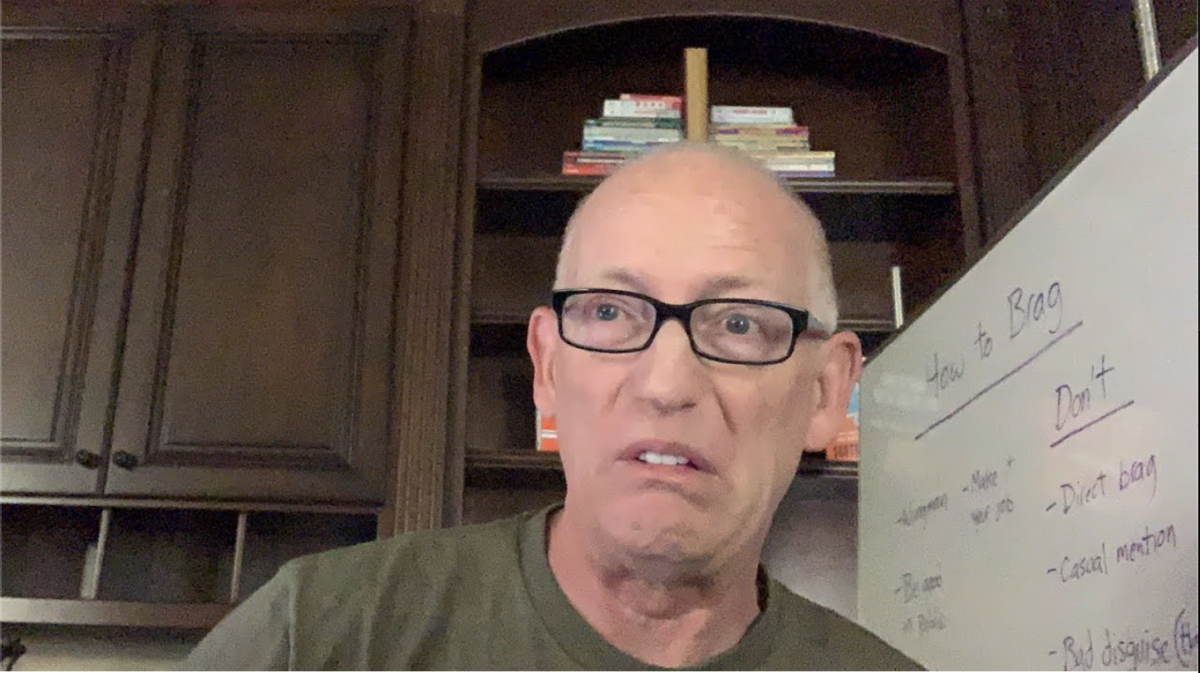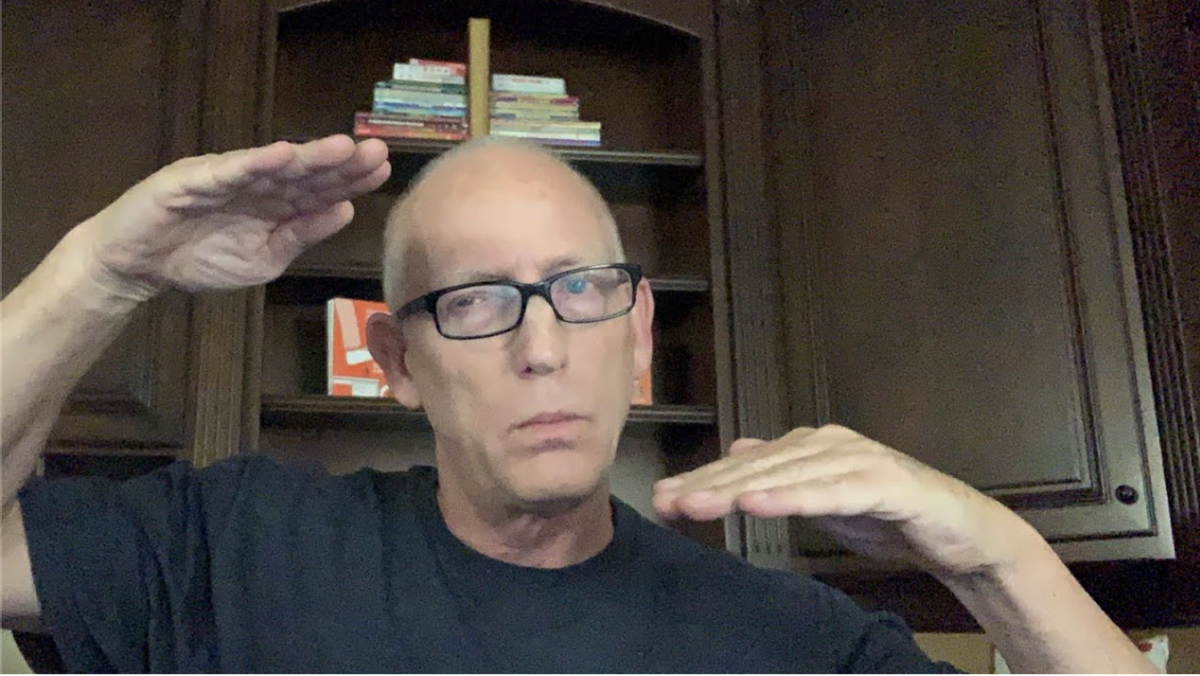![]() {{options.learnMore}} {{options.dismiss}}’, ”, ”, ” ], cookieName: ‘dilbert_cookieconsent_dismissed’, readystate: ‘interactive’ }; ]]> Episode 1481 Scott Adams: Talking About Disgraced President Biden’s Botched Afghanistan Withdrawal and Lots More – Scott Adams’ Blog ]]>
{{options.learnMore}} {{options.dismiss}}’, ”, ”, ” ], cookieName: ‘dilbert_cookieconsent_dismissed’, readystate: ‘interactive’ }; ]]> Episode 1481 Scott Adams: Talking About Disgraced President Biden’s Botched Afghanistan Withdrawal and Lots More – Scott Adams’ Blog ]]>
Keep reading here
Month: August 2021
14 Inspiring LinkedIn Ad Examples and Best Practices for 2021
Ads on LinkedIn can pay off big time. LinkedIn is the most trusted social media platform, and marketing there can lend your brand credibility by proxy. It’s an excellent platform to build your brand, post jobs, or promote your events.
Coming up with good ad creatives is not easy. People on social media have developed “ad blindness” in recent years. They simply scroll past ads. But you still need to produce a great ROAS that your boss will be happy with. No pressure, right?

Here’s your lifesaver! In this roundup of LinkedIn ad examples, you’ll find a handful of creative ads you can get inspired by for your next campaign.
Let’s jump in!
LinkedIn ad examples (and why they work)
29% of marketing professionals say that sponsored posts work best on LinkedIn.
Sponsored posts could be anything from image ads, to carousel ads, or even job ads. In the following sections, you can review a few different styles that use unique approaches to capture the attention of a LinkedIn audience.
LinkedIn sponsored content ad examples
1. Intel Corporation
This LinkedIn ad example is a sponsored content ad with a carousel. These are one of the best ad formats for those just starting up with LinkedIn for their business.
Why does this ad work? Carousels are the second most clicked through ad formats after the single image type ads. If you want to generate more engagement, a carousel ad could be a great way to stop people from scrolling over to the next piece of content.
The comic strip-like carousel used by Intel would catch the eye of any user, let alone their target audience, which consists of IT professionals. The ad copy does a good job in understanding the audience and listing the benefits of the product (see: “business-class PC,” and “boost productivity”).

Source: Intel LinkedIn ads
Takeaways:
- Who said LinkedIn ad creatives must consist of stock photos of professionals in meeting rooms? Try using new, trendy design styles that offer something different to users.
- Investigate what your target market likes with customer surveys, Google Analytics, or your own reviews. Use visual storytelling to channel your messaging around their preferences.
- Don’t forget to build your ad around an objective. Are you looking to increase brand awareness? Or do you have a new product launch? Set up your ad to revolve around a single theme.
2. Airbnb
The next LinkedIn ad example comes to you from Airbnb.
32% of users nowadays need six or more touchpoints to make a purchase decision. Airbnb knows this. This carousel ad focuses mostly on brand awareness by offering some post-COVID tips.
 Continue reading here
Continue reading here
Top 6 Best Job Posting Sites for Employers – 2021 Review
Finding the perfect candidate can be intimidating. Your job opening could have hundreds of potential candidates, and you need a way to narrow them down to a list of the best. Job posting sites solve this problem by accessing, attracting, and managing candidates during the recruitment process. There are countless job posting sites for employers, so we created a list of the top six available.
The Top 6 Best Job Posting Sites for Employers
- LinkedIn – Best for Social Networking
- Indeed – Best for Dynamic Recruiting
- Snagajob – Best for Hourly Jobs
- AngelList – Best for Startups
- FlexJobs – Best for Remote and Flexible Jobs
- Dice – Best for Tech Jobs
While some job posting sites target the entire candidate pool, others are dedicated to a specific niche market. Each of the following six sites are worth looking into, especially if one specializes in solving your specific hiring needs.
#1 – LinkedIn — Best for Social Networking
- Access to 750M+ users
- LinkedIn Messenger for networking
- Targeted ads for job posts
- Automated disqualification emails
LinkedIn is the best place to post a job for social networking purposes. There are 756 million people using LinkedIn. To put that in perspective, that’s more than double the entire U.S. population. Members come from over 200 countries and territories across the globe. It is also home to more than 55 million registered companies.
Odds are you’re probably familiar with LinkedIn already. It’s different from a typical job posting site because it acts more like a social media platform. While posting jobs is a key feature, the site is way more than just that.

It is the best…
Quick Tips: 5 Keys to Giving an Extraordinary Speech

The best way to become a better speaker? By speaking. Don’t pass up an opportunity to say a few words, give a presentation or provide an introduction. And when you do, remember these five tips:
- Start strong and command attention. Make an attention grabbing statement or give an interesting fact. You won’t quickly engage an audience with unprepared and superfluous comments.
- Be authentic. Be yourself, but be your best self. Being prepared is the most important way to demonstrate that you care about your audience. Being unprepared and/or pretentious shows you care more about yourself. Audiences are turned off by those who put on airs and who waste their time.
- Focus on the audience. Be so ready and practiced that you can focus on them and their reactions, rather than your anxieties or needs. A great speech is always about how the audience is positively impacted by what the speaker says and how she or he says it.
- Make the message memorable. Listeners remember stories far more easily than facts or statistics. Tell a good story. Even an introduction can be enhanced with an interesting story about the person being introduced, rather than focusing only on their achievements. Great stories make for a great speech.
- End with a call to action. Leave not doubt what it is you want the listener to do. Simplify it, and make it catchy if you can. Here’s a good test: will an audience member be able to tell a friend or colleague what you said?
Here’s my call to action: print these five ideas and use them as a checklist next time you are getting ready to give a speech. And don’t just give a speech–give an extraordinary speech!
Mark Sanborn is an award winning speaker and Leadership Expert in Residence at High Point University, the Premier Life Skills University. For more information about his work, visit www.marksanborn.com.
For a free assessment and information about The Classic Fred Factor online training and a unique opportunity to license the training, go to www.FredFactor.com.
Author: Mark Sanborn
Mark holds the Certified Speaking Professional designation from the National Speakers Association (NSA) and is a member of the Speaker Hall of Fame. He was recently honored with the Cavett Award, the highest honor the NSA bestows on its members, in recognition of his outstanding contributions to the speaking profession. In 2020, Global Gurus named Mark the #5 Leadership Authority in the world.
Post navigation
Episode 1482 Scott Adams: Today I Will Compare the Leadership Skills of the Taliban to Joe Biden
![]() {{options.learnMore}} {{options.dismiss}}’, ”, ”, ” ], cookieName: ‘dilbert_cookieconsent_dismissed’, readystate: ‘interactive’ }; ]]> Episode 1482 Scott Adams: Today I Will Compare the Leadership Skills of the Taliban to Joe Biden – Scott Adams’ Blog ]]>
{{options.learnMore}} {{options.dismiss}}’, ”, ”, ” ], cookieName: ‘dilbert_cookieconsent_dismissed’, readystate: ‘interactive’ }; ]]> Episode 1482 Scott Adams: Today I Will Compare the Leadership Skills of the Taliban to Joe Biden – Scott Adams’ Blog ]]>
Keep reading here
7 Reasons Why I Chose to Be a Digital Marketer Rather Than a Lawyer
I went to law school, and instead of becoming a lawyer after graduation, I became a Digital Marketer. I think there is ten times more potential in digital marketing than in legal. It was the smart and logical choice for me, because of all of the benefits of digital marketing.
Remote Capable
You can do the whole job from a laptop and rarely does it need to be done in person. This leaves you with the opportunity to work from home, or while you’re traveling.
High Income Potential
Digital Marketing has good salary potential. Rich started out charging $75 an hour. Nowadays you can charge $100-$500 an hour. Once you have more experience in the business you could do $20,000-$100,000 contracts!
Commissions
It’s nice that Digital Marketing often has some bonuses involved. You can get paid if you perform above average. You have a lot of opportunities for more money if you do a good job.
Business Connections
You get to surround yourself with a lot of forward thinkers, business owners, and entrepreneurs. These are the people you want to be connected with, people who are propelling forward in their business ventures. Surround yourself with people who have the mindset you want for your business!
Now let’s get into the surprising benefits that you might not consider!
Tax Friendly
You can work from home and get a home office write off. Your cameras and equipment are write offs. Almost all of your software is write-offs. Most of the softwares you buy for one client you’ll use for all clients, but you can charge every client for use of the software.
Never Get Bored
There are a lot of new things to learn and always something different to do. Less likelihood for burnout. Marketing has so many branches that you can become an expert in! If you get bored with advertising, try website design. If you get bored with social media, you can dabble in email campaigns. There’s always something to move onto, to get better at.
Get Paid Like a Lawyer
You can bill per 10 minutes, you can bill per 15 minutes, you can bill per hour, and those rates are going to be relatively high. Typically you can demand payment up front to get the project started. Companies can also pay to keep you on retainer, a lot of companies want your input and want to rely on you.
Watch the Video:
DigitalMarketer Author

Rich Ux
Rich is the Original Full Stack Marketer. Rich has been a freelancer for 15 years and has run an agency for 3 years. Rich is known for bridging the art and science of digital marketing. He shares his knowledge and experience as a freelance marketer via YouTube. Rich continues to expand both into DFY Services and DIY Courses for his clients. Check out RichandNiche.com to learn more about full-stack digital marketing and digital marketing consulting.
The Beginner’s Guide to Business Names
A business name doesn’t just differentiate you from the competition.
It also sets the tone for your business and is central to creating a successful brand.
So, what do you do if you can’t come with a good business name? What if it’s already taken? How do you know it’s a good name for your business?
This post covers everything you need to know when choosing a business name.
What Is a Business Name?
As the phrase implies, a business name is a title or name that a person or entity uses to conduct business. Essentially, this is your businesses’ legal name. In the case of a sole proprietorship, your business name will be your full legal name.
It is possible to include additional words when naming a sole proprietorship. But, you will still need to use your legal name. For example, if you run a small software consultancy business, you may simply name it Jane Doe or Jane Doe Software. You’ll likely have to register a Doing Business As (DBA) if you’d prefer to operate your sole proprietorship under a different name.
General partnerships follow the same course. Typically, the business name will be a combination of all the partners’ last names. For example, your partnership may be named Doe, Smith & Brown. Again, the business may have to file a DBA to use a different name.
Finally, limited liability companies (LLC) and corporations do not need to include the owner’s legal name. You are free to choose the name you want, provided it is not already registered or trademarked. However, some jurisdictions mandate that you must use LLC or Corporation in the business name. For example, your business name may be Insignia Digital LLC or Insignia Digital Corporation.
It is also worth noting the difference between a business…
Four-step vision inventory
 Photo by Matt Noble on Unsplash
Photo by Matt Noble on Unsplash
There’s a difference between a movement and a promotion.
A promotion starts big but quickly fades.
A movement starts small but eventually builds.
As leaders, we should be about movements — building something that lasts over time.
Many organizations spend more energy promoting events and products instead of reinforcing vision.
Sure, promotions have their place. The problem is they compete with the language of the organization.
A promotion requires volume.
A movement requires vision.
Think of it this way. Your organization has a finite number of words to communicate to those you’re serving and those on the team.
It might not seem that way because we can post anytime on social media and talk all the time. Eventually, though, all those words compete against themselves — and what truly needs to be communicated is lost.
Organizations that understand the power of language and vision understand that less is more and consistency is key.
If you want to create a movement, you need to surround it with a compelling vision.
A compelling vision requires the right language. And once you have the right language, you must do something that is often overlooked or forgotten.
Stay. On. Message.
The most common vision mistake I see once organizations have the right language is that they drift off the message.
There are lots of reasons for this. We believe we’ve said it enough and that everyone has heard it — (huge mistake.) We get bored with the same message. Or, we’re not sure how to keep the vision fresh.
I get it. In fact, let me give you an example. When I worked in the corporate marketing department at Chick-fil-A, one of my roles was working with the Atlanta Area Operators in the company’s hometown market. The “Eat More Chicken” campaign had been going for a few years at this point and the Operators asked a good question. “How much longer are we going to stay with Eat More Chicken?”
We decided to do some research in hopes of figuring out how deeply this message had resonated in the Atlanta market. Imagine our surprise when we discovered most Atlantans had not even heard of it. As a result, we decided to stay on message.
This illustrates one of the most important job responsibilities we have: Leaders are Repeaters.
We must communicate the vision over and over and over and over again. And when you think you’ve said it enough, say it again.
Vision rarely repeated is quickly forgotten.
The other mistake is that vision is usually communicated by just one or two people. When this happens, it’s usually an indicator that the language isn’t portable. Vision gets stuck when three or four people down the line in an organization can’t clearly articulate it to someone else. Vision must be portable and memorable.
A way to get there is to simply ask the question, “What do we want…
Tip-of-the-Tongue Phenomenon Or Lethologica – PsyBlog
The tip-of-the-tongue phenomenon or lethologica is when the memory is right there and yet for some reason you can’t quite access it.
The tip-of-the-tongue phenomenon or lethologica is when you know a word, but cannot think of it.
Technically, the tip-of-the-tongue phenomenon is a temporary inability to retrieve an item from memory.
The infuriating internal monologue during the tip-of-the-tongue phenomenon goes something like this:
“What’s the name of that guy who was in that film with…you know the one…he’s…no, no it’s not Denzel Washington, the other guy.
Oh God, I know it, it’s right there.
It’s on the tip of my tongue!
This is driving me crazy…!
I can see his face.
This is ridiculous!
No, not Denzel Washington!”
The tip-of-the-tongue phenomenon
The tip-of-the-tongue or ‘TOT’ phenomenon, also known as lethologica, is now well-documented in psychology.
It is a very common example of what memory expert Daniel L. Schacter calls ‘blocking’, one of the seven sins of memory (Schacter, 1999).
The tip-of-the-tongue phenomenon is the experience that the memory is right there and yet for some reason you can’t quite access it.
Sometimes all you can think about is something similar, say another actor who is often in the same types of films.
It’s this memory that seems to block the retrieval of the one you really want.
Other times there’s apparently nothing blocking the memory’s retrieval other than your mind’s stubborn refusal.
Studies on tip-of-the-tongue style blocking have shown that around half of the time we will become ‘unblocked’ after about a minute.
The rest of the time it may take days to recover the memory from the tip-of-the-tongue.
As anyone getting on in years will tell you, tip-of-the-tongue blocking increases with age.
Older adults certainly experience more problems recalling names than younger adults.
One study finds college students have one or two tip-of-the-tongue moments a week, while older adults experience the tip-of-the-tongue phenomenon between two to four times per week.
Tasting words on the tip-of-the-tongue
One fascinating aspect of the tip-of-the-tongue phenomenon is the study of synaesthetes.
Synaesthesia is a fairly common condition where people have a cross-wiring in their brains between senses (see: types of synaesthesia).
This means that people with synaesthesia may experience numbers as colours, sounds as images or even words as tastes.
This last category, a rare form known as lexical-gustatory synaesthesia, provides an opportunity to study the TOT phenomenon in an unusual way.
Simner and Ward (2006) figured that if the cross-wiring in synaesthetes’ brains turns words into tastes, perhaps they would literally be able to taste words that are on the tips of their tongues before they could even recall the word itself.
Magically, there’s evidence this really does happen.
Simner and Ward set about inducing tip-of-the-tongue states in the lab by showing 6 participants with this rare form of synaesthesia pictures of unusual objects, such as a platypus.
In some trials, the experimenters managed to successfully induce a tip-of-the-tongue state in the synaesthetes.
Amazingly, these lexical-gustatory synaesthetes did actually feel a taste on their tongues as they struggled for the word to describe the picture.
In one case a participant tasted tuna when she was trying to remember…
How to Become a Marketing Manager
With U.S. News declaring it the number one job in sales and marketing, and a median average salary of around $142,000 in the U.S., it’s no surprise that people are looking at how to become a marketing manager.
Perhaps you want to move up the ranks at your current company, or maybe you’re looking to change careers. Before you invest the time and effort it takes to get into the role, it’s essential to understand the responsibilities it entails.
In this article, you’ll learn what you can expect in the role, how you can demonstrate your worthiness to become a marketing manager (at your current place or in greener pastures), and how to present your case for a promotion.
Everything you need to know about the marketing manager role
Marketing managers can be called various things depending on the company. Some companies refer to individuals carrying out general marketing tasks as marketing managers, while others distinguish the leaders in their marketing departments this way.
Most companies are direct and call the people in these roles marketing managers or marketing directors. Some reverse the subject and call the position director of marketing.
Larger companies usually get specific about which of their channel’s marketing the applicant will be managing. Others get creative.


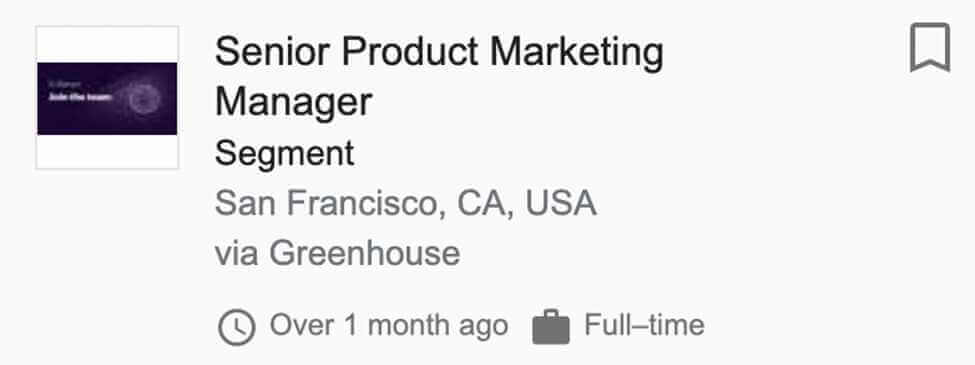



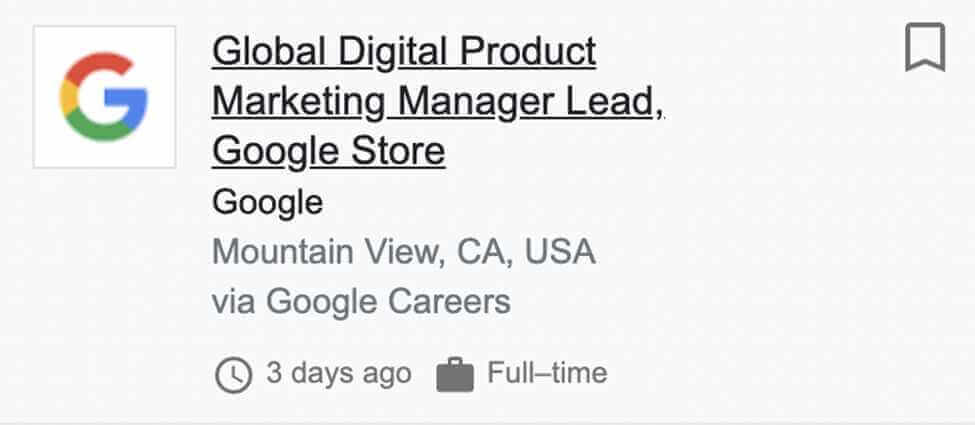

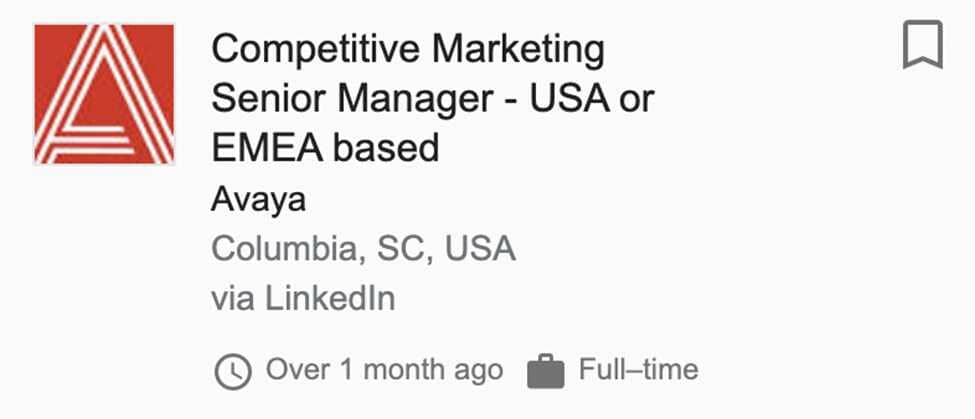

As you can see, there are many names for marketing managers and many niches for marketing managers. This may seem confusing at first, but knowing a little more about the types of marketing managers will help you apply for the role that suits you best.
The specifics of each role will vary depending on the industry and the company you choose. For example, let’s look at the differences between two types of marketing managers.
A content marketing manager’s role may focus on overseeing the production and execution of content across social media, the company’s website, email, and other channels.
Here is an example of a content marketing manager’s job duties:
A digital product marketing manager’s role will focus on a tech product, ensuring all channel communications are optimized and aligned with its positioning strategy.
Here is an example of a digital product marketing manager’s job duties:
